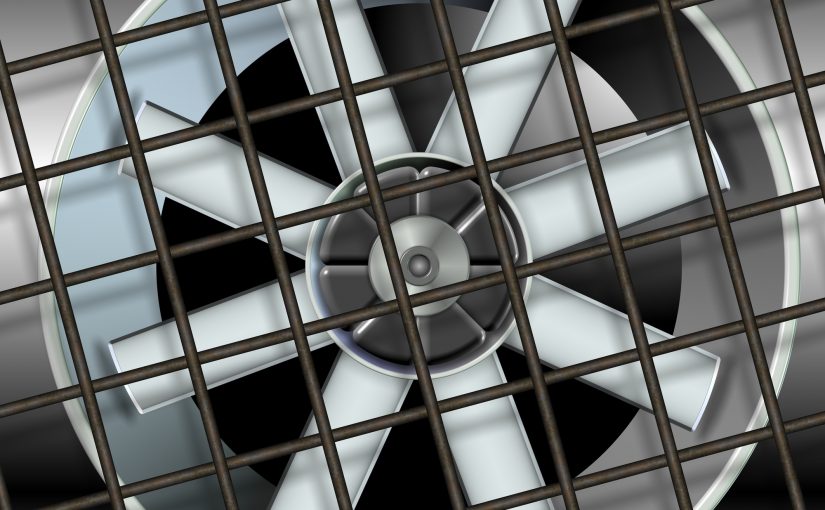Try holding your breath for any amount of time. You’ll start feeling like your lungs are going to burst after thirty seconds.
A room needs to breathe like our bodies. Whether it’s a restaurant, a manufacturing area, or an office, they’ll all need adequate ventilation. Bad air has to get out to let fresh air in.
Otherwise, the room will suffer just like your lungs did. You can’t ignore unwanted odors, but they are probably the least of your problems. Moisture levels will increase and that will lead to molds, mildew, and other nasty stuff.
Choosing the best exhaust fan for your needs guarantees that your facility can breathe easy. How do you know if you’re buying the correct one? Here’s what our experts say.
Consider the Airflow Demand of the Room
Calculating the desired volume of air that goes through your ventilation system will determine how much power your fan will need to deliver. This is the airflow rate and it’s expressed as cubic feet per minute (CFM). All exhaust fans will have a cfm rating.
The rate of airflow required depends on several factors. You can consult your local building and safety codes for ventilation regulations.
Occupancy and Area
For commercial buildings, cfm rates vary by type of occupancy. You can have a rate per unit area and a rate per person taking up space.
These are numbers from ASHRAE (American Society of Heating, Refrigerating, and Air-conditioning Engineers Inc) Standard 62.1-2010 commercial building code provisions for indoor air quality: a classroom (with children age 5 and up) will need 10 cfm per person and an additional 0.12 cfm per square-foot.
An office requires 5 cfm per person and an extra 0.06 cfm for every square-foot. ASHRAE also provided a default value of 17 cfm per person in the office. They used the default occupant density of 5 persons in a 1000 square-feet area to come up with that value.
Air Change
Some spaces have a variable number of occupants at any given time. Assembly halls, gymnasiums, and theaters are some examples. The air change method of calculating the cfm is more useful in these situations.
For the air change method, you need the following data. First is the total cubic feet of airspace. You can calculate this by multiplying the dimensions (length, width, and height) of the room.
The second number is the minutes per change (min/chg). This is the amount of time in minutes that one cycle of air goes through the room and ventilation system.
To get the cfm, you divide the total airspace by the minutes per change. For example, a theater has a suggested min/chg of 2 to 10.
You’d want the lower number of min/chg if you want the air to change quickly. For spaces with low ceilings, in hot climates, or with heavy occupancy relative to the size, use the lower number.
You can use the higher range for comfort cooling.
Heat Removal
If the temperature inside a structure is higher than the outside air temperature, your ventilation system can provide some degree of cooling. To illustrate this principle but on a smaller scale, look at your desktop pc. The pc chassis has fans installed with intake and exhaust for optimal airflow and cooling.
To calculate the cfm using the heat removal method, you’re gonna need some numbers. First is the amount of heat to remove in BTU (British thermal unit) per hour. Next are the average outdoor temperature and the desired indoor temperature.
The formula is CFM = BTU/(Delta T x 1.08) where Delta T is the difference between the outdoor and indoor temperature.
Determine the Static Pressure
All flowing systems encounter resistance. For example, the flow of blood through your body is hindered by an increase in blood pressure. For airflow systems, this is the static pressure or system air resistance.
Figuring out the static pressure is important because your exhaust fan has to overcome this resistance for sufficient airflow. The traditional measurement for static pressure is in inches of water.
There are a lot of factors that contribute to an increase in static pressure. You have to add them all up to calculate the total external static pressure.
One of the biggest contributors to static pressure is the length of the ducts and how many twists and turns they have. Other factors are friction loss from filters, supply grille, and air washer.
Where Will the Fan Be Installed?
There are three places where commercial exhaust fans are commonly installed. These are the rooftop, the wall, or in the duct. Some laws require you to install the exhaust fan at a specific location. If you’re working with chemicals or flammable substances, a roof exhaust fan may be the best option.
Where the fan will get mounted will also decide the fan housing and accessories, such as wall caps, vents, and shutters.
Acceptable Noise Level
The spinning blades of a fan will always generate sound. The noise level is the sone rating. You should check out the sone levels of the exhaust fan model before purchase.
The sone levels correlate with the cfm of the fan. You should, therefore, pick a balance between how powerful the fan is and how much noise you can tolerate.
For conference rooms, where you need to hear people talking, the suggested sone levels are between 1.7 to 5. For factories operating heavy machinery, sone levels can be as high as 25 to 60.
The Best Exhaust Fan Must Be Energy Efficient
You need ventilation fans to meet the guidelines set by the US Environmental Protection Agency. To earn an energy star rating, the exhaust fan must pass minimum efficacy levels, performance, and allowable noise.
An energy efficient fan will save you money from utility bills. Also, you should feel good that you’re reducing your carbon footprint by choosing an energy efficient product.
Taking It All In
You have to research and be diligent to choose the best exhaust fan for your needs. While all this data may be intimidating at first, we hope that understanding what they mean will help you make the correct purchase.
While we haven’t tackled the different types of commercial exhaust fans, you can read more about them here. For more information about exhaust fans in general, please visit our blog.










